With every visit to Drostenkamp, you can fully enjoy birds. There are different types of swimming birds, but also robins, finches, magpies, crows, etc. The most common swimming bird is the greylag goose. Reason for making a blog about the greylag geese.
It is quite special that so many greylag geese breed in the Netherlands these days. 40 years ago it was so rare for them to breed in the Netherlands that they spawned pairs. And now …
About the greylag goose (Source: Vogelbescherming Nederland)
Like many other geese, Greylag Geese are very social birds and mate for life. They are firm and brown-grey, the largest of all brown-grey geese. They breed from April to May/June. One clutch per year with four to six eggs (exceptionally up to 8 eggs). Greylag geese live in all kinds of areas, but always near water and open areas. They are vegetarians, on the menu are grass, plant roots, seeds, fruits and young shoots (including reeds). In winter they also eat crop residues of maize, potatoes and grains in fields. The Greylag goose is originally a migratory bird species. The Netherlands has traditionally been an important wintering area. Much has changed in towing behavior in recent decades. There are populations that hardly migrate (including in Scotland). In the 1980s, about 80% of the European greylag geese wintered in Spain, but the Netherlands is now the most important wintering area. From February the wintering birds leave the Netherlands and return to the Scandinavian breeding areas. An increasing proportion of the greylag geese in the Netherlands do not or hardly migrate and are with us all year round. These geese are called ‘summer’ geese. After the Second World War, the greylag goose was a very rare breeding bird in the Netherlands. Number of breeding pairs 100,000-165,000 (in 2018-2020)
Below you can see photos I took in and around the ponds of Drostenkamp.

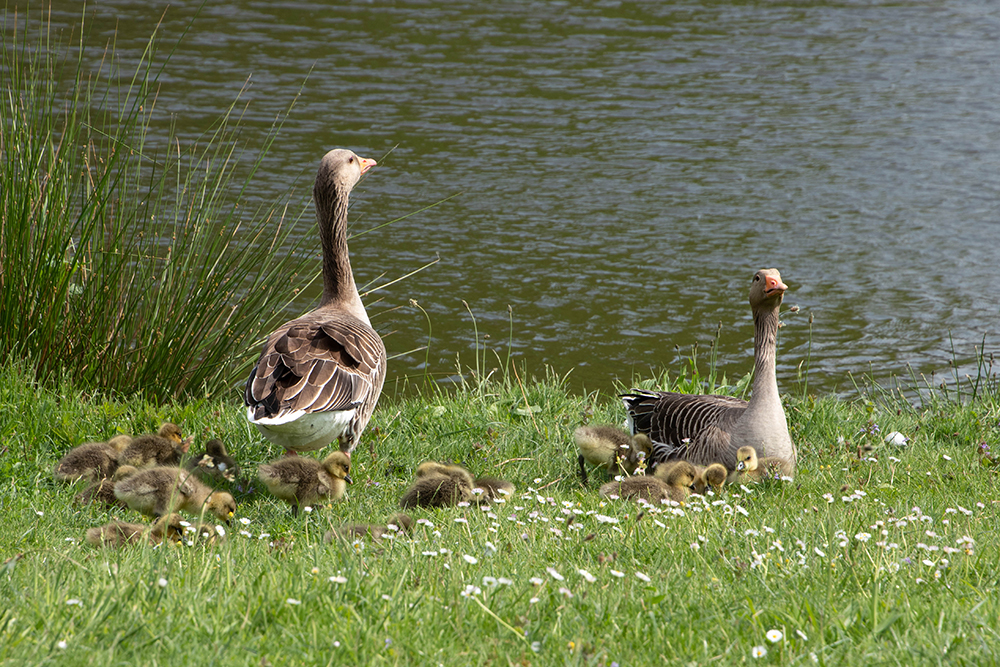
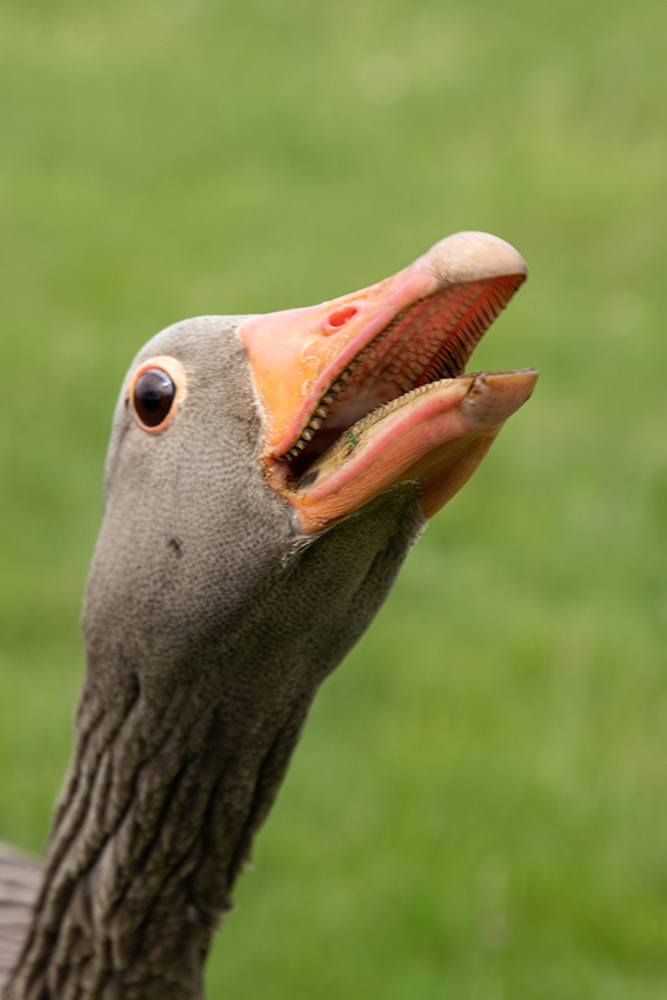

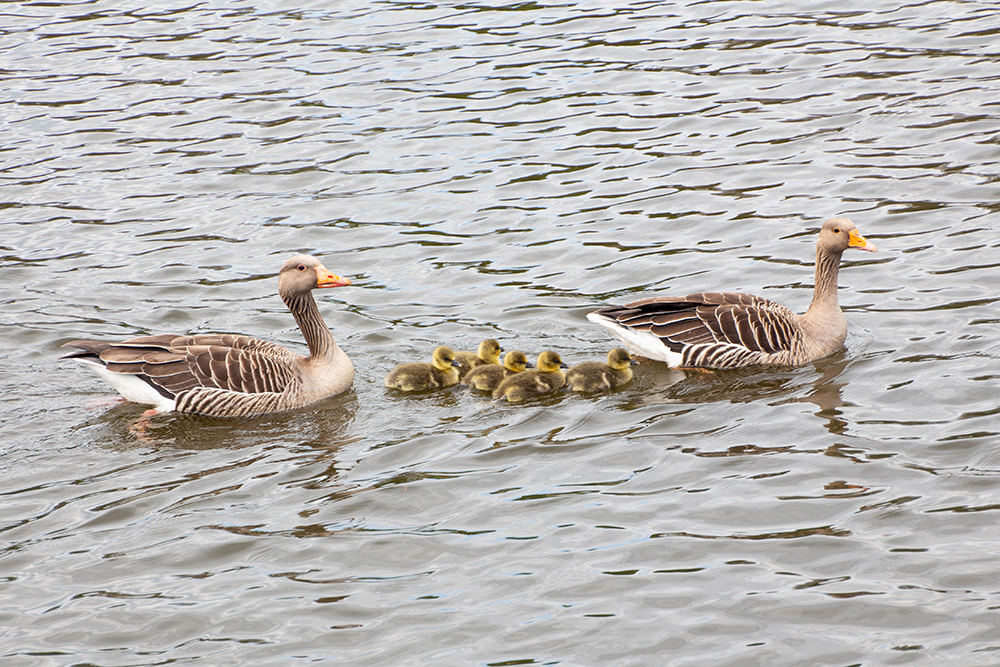
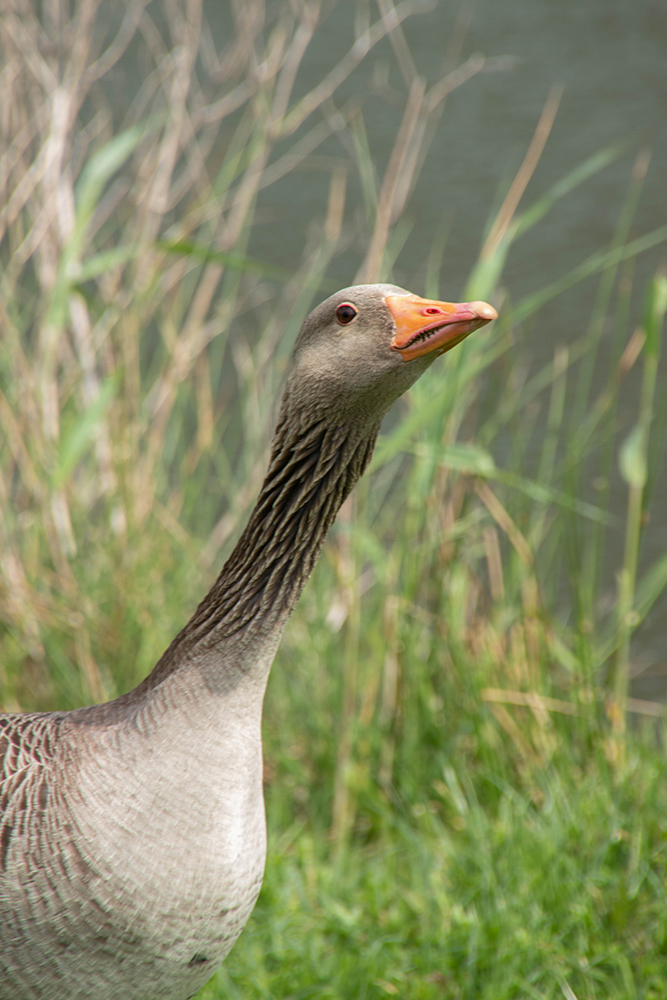
Normally you see a family of geese swimming with one parent in front, followed by the chicks and at the end the second parent. Other geese are always chased away. What was special was that these chicks were cared for by a trio. They always stayed together. Nice an uncle or aunt extra 😉
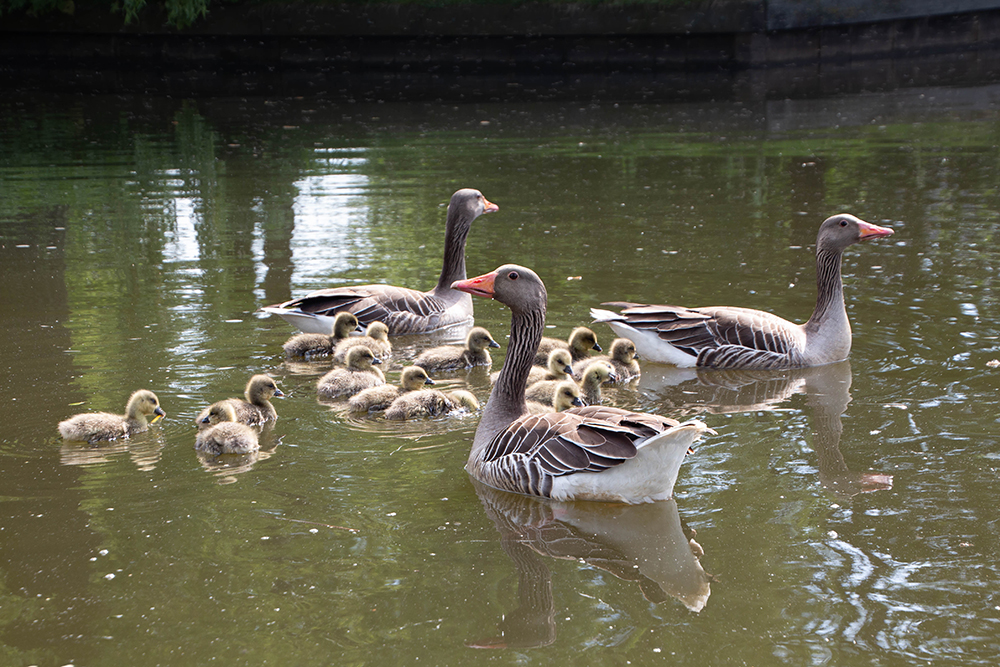
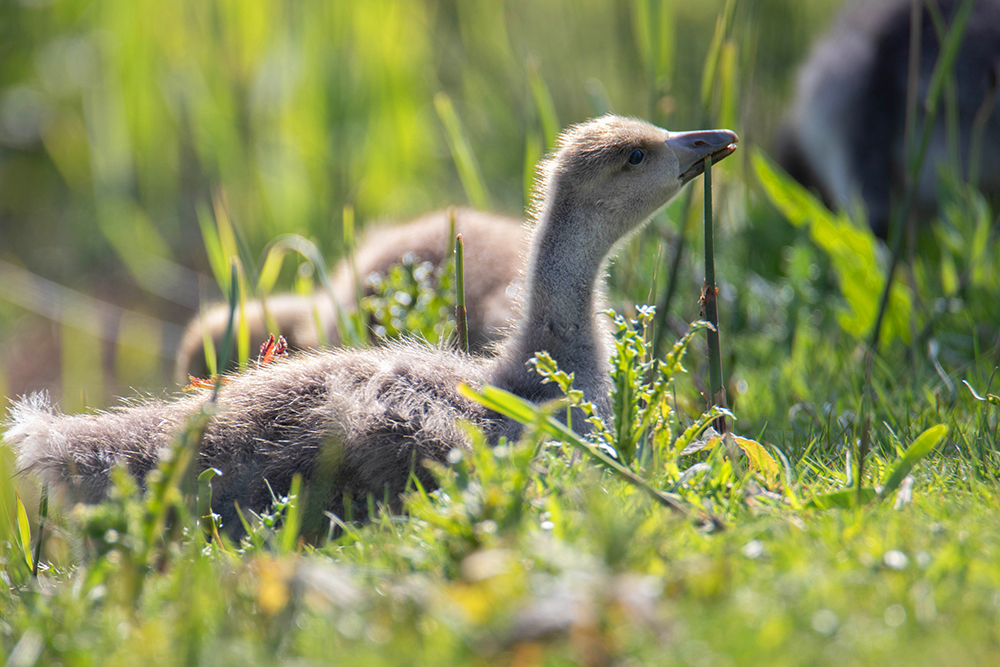
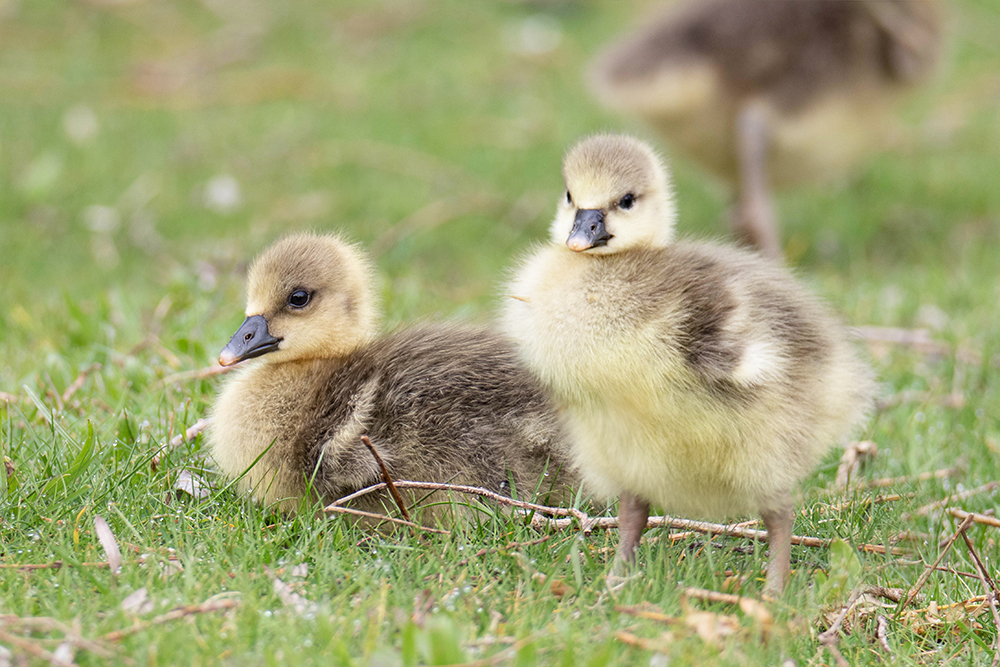

In 2014 I took the photo below. There was always a white goose mother. She was there in the years that followed. Every year she had a few goslings, which she took care of alone. Dad was never around. Though she was alone, all her young grew up. And that is still visible years later.
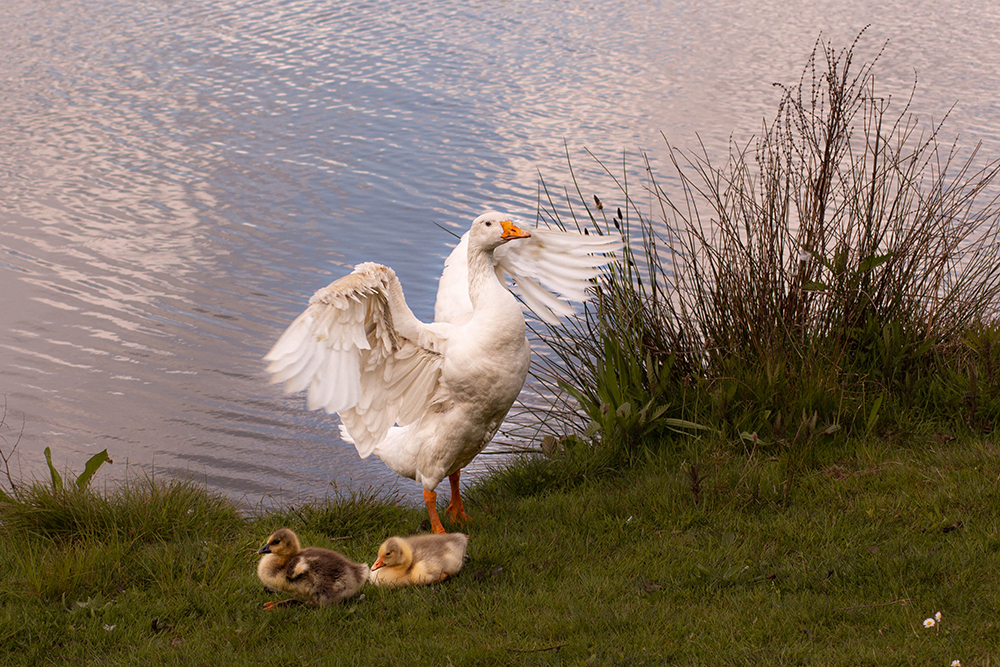
There are now every year geese that are white with some dark spots and geese with white feathers that they shouldn’t have. The blue eyes do not actually belong to the greylag goose, but they are beautiful of course.
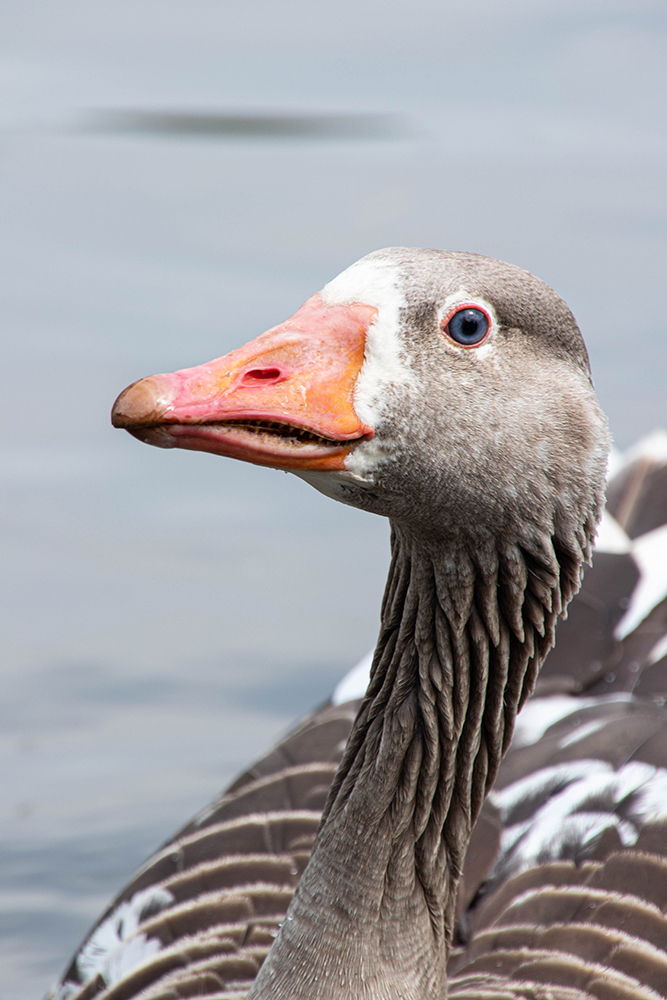
The influence of the white goose is also clearly visible in the chicks. The yellower, the more white, they are later on. Sometimes they are also born with an orange bill.
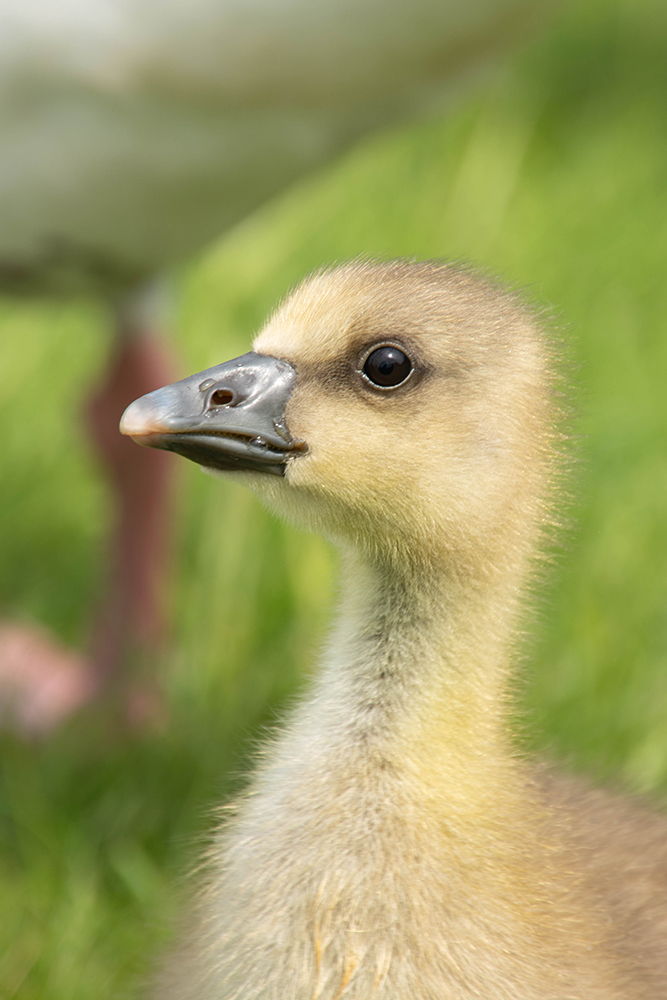
Sounds of greylag geese:
In flight:
In group and single bird:

Excellent photography
Thank you! 😀